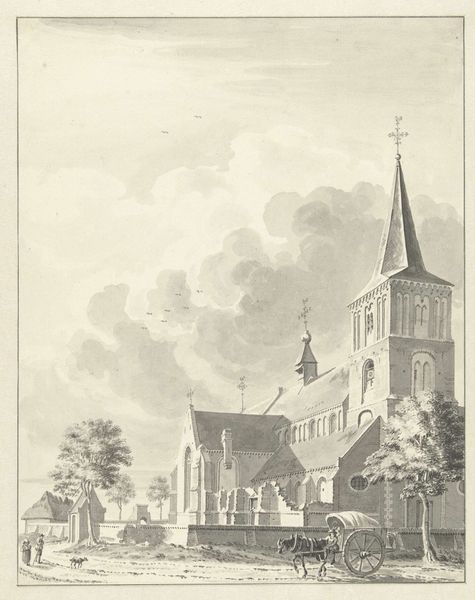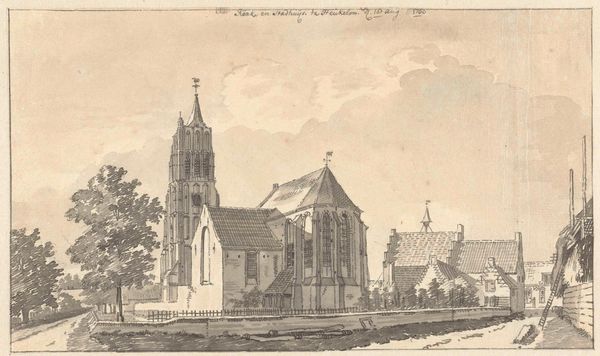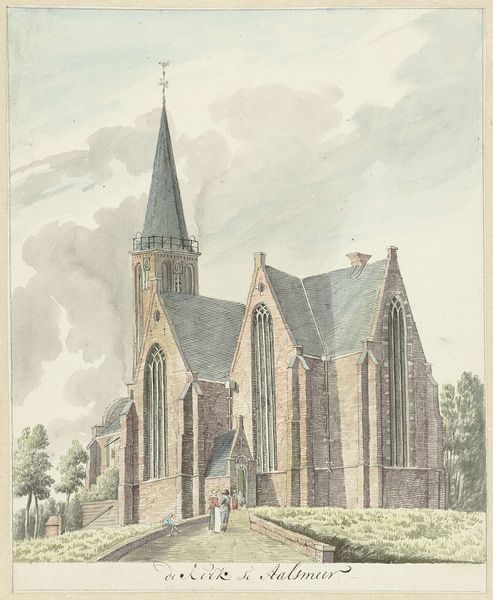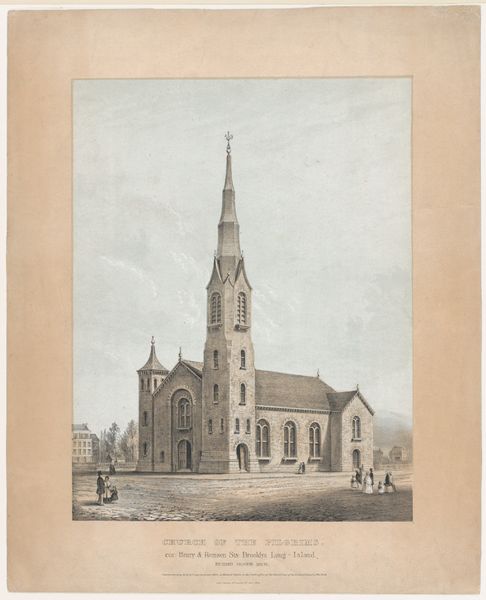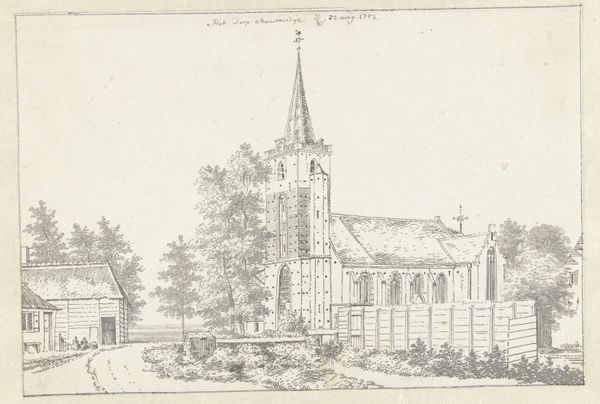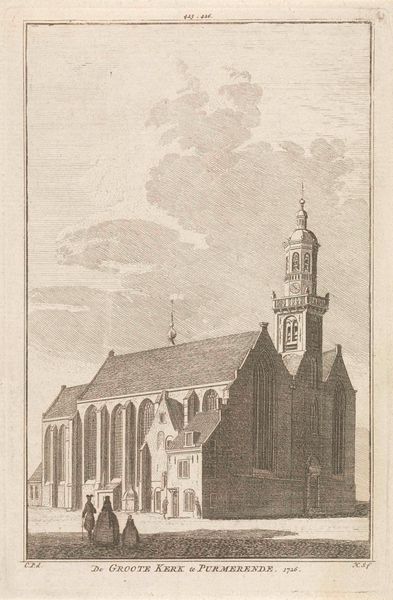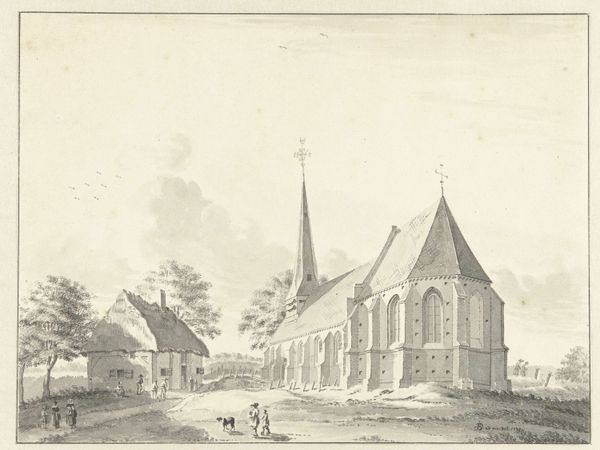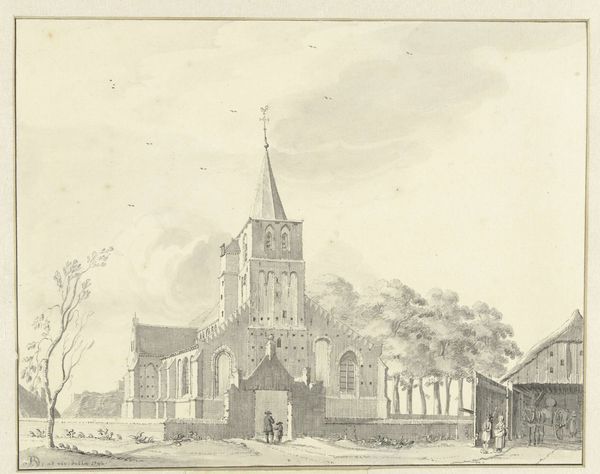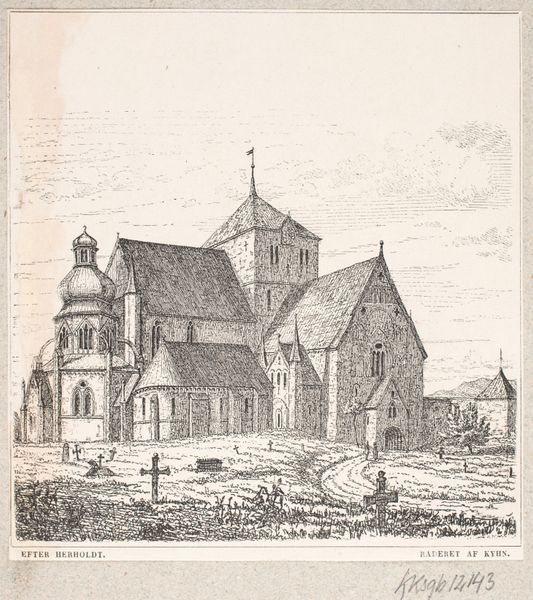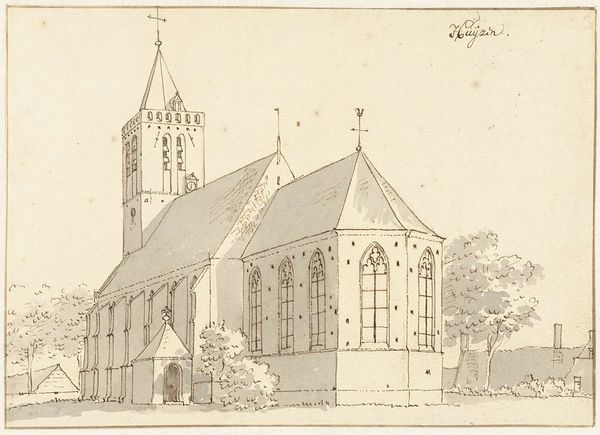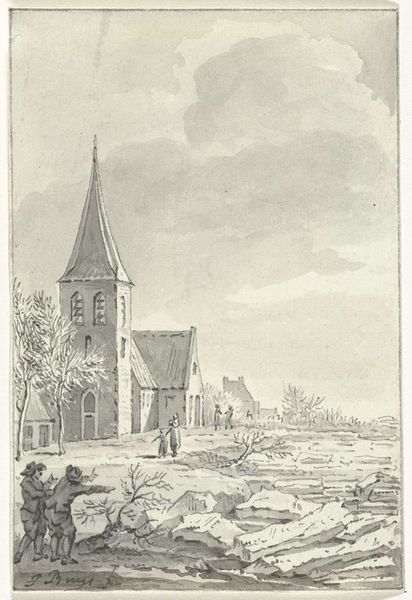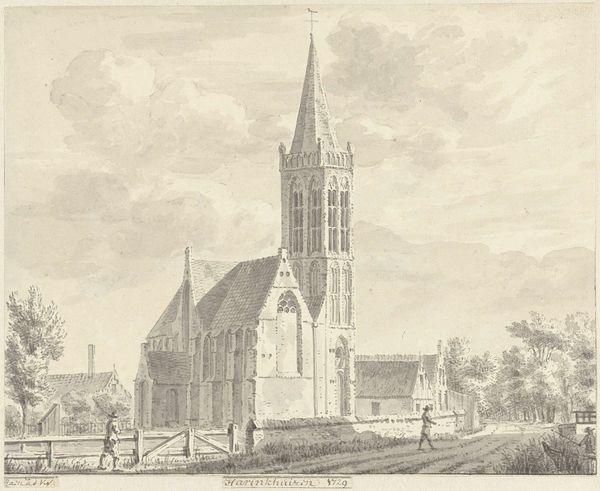
drawing, paper, ink, architecture
#
drawing
#
dutch-golden-age
#
old engraving style
#
landscape
#
paper
#
ink
#
genre-painting
#
architecture
#
realism
Dimensions: height 279 mm, width 210 mm
Copyright: Rijks Museum: Open Domain
Curator: This serene 1738 drawing by Jan de Beijer depicts the church at Leende, preserved within the Rijksmuseum's collection. The artist used ink on paper to create this Dutch Golden Age scene. Editor: It evokes a sense of quiet dignity, doesn't it? The limited tonal range lends it a feeling of restraint, yet the meticulous details of the architecture capture one’s attention. Curator: De Beijer masterfully employs line and perspective here, constructing a hierarchy between architectural components and the diminutive figures, framing and giving the space purpose. He positions the church deliberately against the horizon line and the play of light in the sky, too, commands the mood of this drawing. Editor: Observing the materials closely—the rough-hewn texture suggested on the building's facade through layered washes of ink, gives a certain weight. One wonders about the local sources used to raise a place like that, and who oversaw that production. The lives and resources invested in that building. Curator: Indeed. And notice the deliberate placement of figures within the composition: they are integral, their presence giving scale and imbuing this structure with purpose and life. How these commoners and nobles become supporting aspects to a much grander, more impactful message. Editor: Absolutely. The layering of social meanings embedded within the brick, mortar, timber, ink, and paper itself – these mundane materials, through labor and intention, rise beyond the functional. Think of the trade routes through which these raw goods moved, all now recorded. Curator: Its balanced form presents a sense of wholeness, and it offers an unpretentious depiction of faith and community, as well as the period and aesthetic styles of its day. Its structure is meant to lift our attention heavenward. Editor: Yes, now it brings to light histories. What begins with material ends in social awareness; its beauty lies not only in structure but how people and effort make something from seemingly nothing. Curator: Indeed. I’m left considering the intentional and measured nature of architectural and landscape art within the Golden Age and considering what ideals those artists hoped to embody. Editor: And, for me, that old building evokes all the collective struggles, intentions, hands, and artistry it took to materialize something lasting out of so little.
Comments
No comments
Be the first to comment and join the conversation on the ultimate creative platform.
